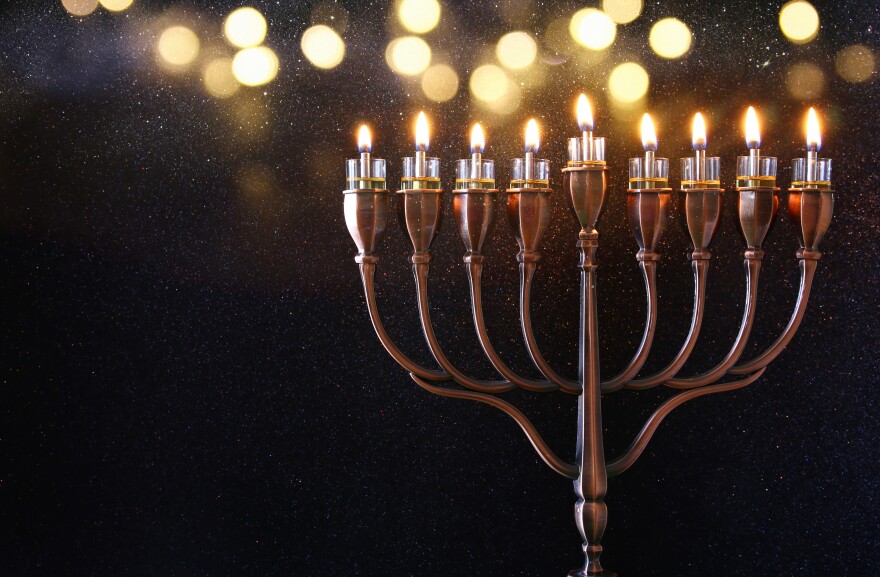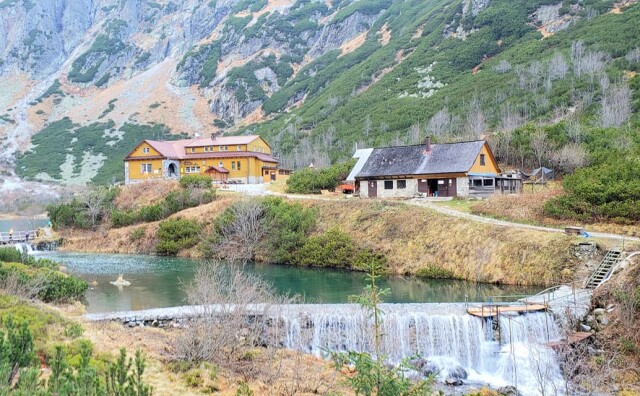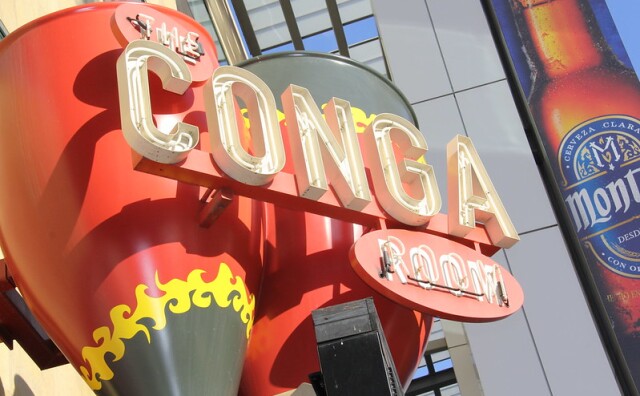Festival of Lights in 8 Exciting Nights: LAist’s Handy Hanukkah How-to Guide

When’s Hanukkah? Like, now.
This year, the Festival of Lights begins this Sunday night, Dec. 18. Jews will begin their celebration by lighting candles in an eight-branched candelabrum called a Hanukkiyah (pronounced Kha-New-Key-Yah), but if you say “Hanukkah menorah,” people will know what you mean.
There'll be fried foods like donuts and latkes, songs about triumphing over adversity, and a celebration of light, renewal and hope. And this will go on for eight nights (and the days that follow them).
L.A. nightlife is packed with Hanukkah happenings: there are candle lightings, Hanukkah parties and carnivals, and even menorah car parades to mark the holiday.
Plus, so many stores and artists’ shops have constructed or artistically interpreted the menorah that you should be able to pick one up that suits your decor and your budget. No budget? No problem. A Jewish outreach organization called Chabad, with outposts across Los Angeles and worldwide, usually offers menorah kits for free. (They’re also the brains behind the car parades.)
What about presents? Gift-giving isn’t part of the original Hanukkah observance, but became traditional because the holiday shares December space with a certain other holiday (that, one could argue, probably wasn’t supposed to be about gifts either).
-
Listen: UCLA Chancellor, Lowrider show, more
-
Sunny skies in the afternoon, highs in the 70s-80s
-
This year's English tudor is on view until May 19
Here’s an eight-night crash course in how to celebrate Hanukkah, plus some conversational prompts: our gift to you to help make holiday parties a little less awkward.
Night 1: Learn About The Holiday
The celebration happens in the Jewish calendar every year on the 25th of the Hebrew month of Kislev. (This year that's Sunday, Dec. 18) But because the calendar runs on a lunar cycle, (which is different to the solar-based Gregorian calendar), the dates shift from year to year. So don’t get used to Hanukkah overlapping with Christmas: it doesn’t always. (Next year, first day of Hanukkah is Dec. 7.)
The primary narrative of Hanukkah is set in the time of the Second Temple in Jerusalem; the Greek-Syrians (sometimes called the Syrian-Greeks, Hellenists, Hellenizers or Seleucids, depending who you ask) had forbidden Jewish practice and desecrated the Temple.
In 167 BCE (that’s "Before the Common Era," what Jews use instead of BC) a group of Jewish people called the Maccabees rebelled and within two years, the revolt succeeded and the Jews reclaimed the Temple.
Hanukkah celebrates both the military victory, a battle in which an army of few triumphed over an army of many, and the discovery of a small jar of pure oil that should have lasted one day and lasted eight. (Boom, miracles.)
The word Hanukkah means dedication or rededication, a nod to the Maccabees’ rededication of the defiled temple once it was fit for ritual use. The holiday is an opportunity to acknowledge the presence of miracles, of triumph over impossible odds, the restorative quality of rededication, and appreciating the ephemeral nature of our assets and resources. So one way to celebrate is to find something old or routine and giving it a refresh, so it feels new again.
- Pickleball and Fried Pickles with Trybal Gatherings and Infinite Light, powered by the Jewish Federation of Greater Los Angeles
- Prepare holiday meals for the hungry and homeless with One Big Kitchen LA and Impact Israel: RSVP required
- Hanukkah Kayak Candlelighting with Open Temple, 5-7 pm
Conversational prompt: What do you and your friends find miraculous about your lives? What are you rededicating yourselves to? And how DO you spell Hanukkah? Chanukah? Khanike?
Night 2: Light It Up
So about that hanukkiya/menorah. Most people use candles, but some use oil, a closer tribute to the Hanukkah miracle.
How do we light it? Well that’s a whole conversation in the Talmud (a Jewish text that records centuries’ worth of rabbinic legal and religious discussions), with two schools of thought from rabbis Hillel and Shammai, who often disagreed about how to interpret Jewish text.
Hillel said that we should kindle one on the first day, and continue to add one each night, to add to holiness. Shammai suggested lighting all eight the first night, and counting down, to show how many days of the holiday are left. As usual, Hillel’s rulings became accepted practice; we start with one light and add. However, as a compromise, the Talmud says, in the times of the Messiah, we’ll do everything Shammai’s way. (Cut to Shammai rolling his eyes and tweeting with the hashtag #geethanks.)
-
Esther D. Kustanowitz is a freelance writer based in Los Angeles; she co-hosts The Bagel Report, an award-winning podcast about the intersection between Judaism and popular culture.
Most people place their menorah in the window to fulfill the commandment of publicizing the miracle; it also proudly proclaims that the house is a Jewish home. This may frighten some, especially in a year that’s seen increased antisemitism. But this is the tradition: we trust in the message of the miracle, we hope we will be safe, and that our light will shine.
- Get your own hanukkiyah from your favorite home goods store like Crate & Barrel, Pottery Barn and Bed Bath & Beyond, support independent makers on Etsy, or if you’re in a rush, Amazon.
- “Gelt Drop” at Platform Park in Culver City, 5:30 pm
Candle Lightings:
- Third Street Promenade in Santa Monica, 5-6:30 pm (daily)
- Culver Steps in Culver City 4:30-5:30 pm
- Loews Santa Monica Beach Hotel, 5-7 pm
Conversational prompt: If you were in charge of the decision, how would you recommend people light their Hanukkah candles and why?
Night 3: Spin Out And Do The Dreidel
Despite the popular song, if you have a little dreidel, it’s probably made out of wood or plastic, not clay. (Two things that canonically are made out of clay: golems, Jewish folklore’s clay beings that come to life to protect their communities or as guest stars on supernatural-themed television shows, and Wonder Woman — who was sculpted from clay, given superpowers by the Greeks and in one iteration, spun around to transform. Wait a minute: is Wonder Woman a dreidel?)
Each of the dreidel’s four sides has a Hebrew letter — Nun, Gimmel, Hay or Shin — standing for a word in the Hebrew phrase “Nes Gadol Haya Sham,” a great miracle happened there.” (In Israel, the Shin — for “sham,” meaning “there” — is replaced with the letter “Pey,” standing for “po,” or “here.”)

Dreidel may have originated in times of Greek persecution, when soldiers would raid gatherings of students trying to catch them in forbidden Torah study; some sources say that when they heard the soldiers, the students would quickly start playing dreidel, to pretend they were gambling, not studying. Now, people are free to play however they want: most play with a pot of chocolate coins, or Hanukkah gelt (see next night): if you get a “Nun” you get nothing; “Gimmel” gets you the whole pot; “Hay” gets you half the pot, and “Shin/Pay” means you have to throw in more coins. May the odds be ever in your favor.
- Going out? Head to the Grove for an outdoor candlelighting from 5:30 to 7 p.m. with musician and spiritual motivator Nissim Black, Montana Tucker and Holocaust survivor Joseph Alexander, in honor of his 100th birthday.
- Staying in? Attend a virtual candlelighting with nonprofit, nonpartisan refugee protection organization HIAS. Register here.
Conversational prompt: If you had to pick four English letters to put on the dreidel, what would they be and what would they stand for?
Night 4: Got Gelt?
Playing with money isn’t a comfortable look for a Jewish holiday in a world and social media climate plagued by the resurgence of antisemitism, but these coins are made of chocolate and therefore should not contribute to any media conspiracy theories. They’re not even delicious, since most chocolate coins are not usually high-quality chocolate.
But because we live in the modern age, a few companies are giving these metal wrapped chocolate discs a facelift: Try See’s Milk Chocolate Coins, or Manischewitz’s milk chocolate or dark chocolate, or its utterly pointless but at least on-trend crypto rebrand version.
And although better quality chocolate is now available, purists may insist: if it doesn’t taste metallic, it’s not really Hanukkah gelt. Fun fact: Chocolate gelt are usually color-coded…gold foil for milk chocolate and silver foil for dark chocolate.
- Menorah Lighting & Hanukkah Celebration:
- The Commons at Calabasas, hosted by The Calabasas Shul with activities, musical entertainment, kid-friendly activities, and refreshments starting at 4:30 p.m., with candle lighting ceremony at 6:30 p.m.
- Ivy Station, Culver City
Conversational prompt: Why isn’t there white chocolate or red velvet flavored Hanukkah gelt? If you were making gelt for next Hanukkah, what flavor would it be?
Night 5: Load Up On Latkes
Potato pancakes, or latkes, are usually the culinary star of Hanukkah celebrations, but in the 16th century, before potatoes came to eastern Europe — where many Ashkenazi Jews come from — they used cheese (which, frankly, is still a delicious idea).
Nowadays, people generally grate the starchy tubers, drain the excess liquid, add eggs, onions and flour of some sort and submerge them in oil. But the fritter has also inspired much culinary rethinking, from baked versions that skimp on the oil in the name of reducing fat and cholesterol to versions that include shredded carrots, sweet potatoes, broccoli or zucchini.
This year, a New York eatery is making rectangular latkes and some are stuffing their latkes with pickles or cheese. Check out classic and modern latke recipes and accompanying dishes fit for a Hanukkah table in this Hanukkah cookbook from Custom&Craft.
[LAist also has a classic showdown of two methods for your cooking needs: How To Make The Perfect Hanukkah Latke, Each And Every Time]
If you like your desserts oily, snag yourself some sufganiyot, originally jelly-filled doughnuts. The word comes from the same root as “sfog,” the Hebrew for “sponge,” so it’s right there in the name: the dough needs to soak up the oil. Israelis consume an estimated 24 million sufganiyot over the course of the holiday, which may not seem like a lot to Americans until you realize that the population of Israel is just shy of 9 million people.
Israeli bakers get creative inventing new flavors from halva to pistachio and beyond, often served with a shot of whiskey or a syringe of additional filling that customers can add themselves. In Los Angeles, Jewish bakeries started up production on jelly and other flavor-injected doughnuts a week before the holiday; call ahead to make sure they have the flavors you want, like these cookie dough sufganiyot from Bibi’s Bakery in the Pico-Robertson neighborhood:
- Watch Bibi’s Dan Messinger make sufganiyot
- Latkes Frying and Serving Tips with Shannon Sarna
- Rainbow Latkes, from Adeena Sussman, co-author, Cravings by Chrissy Teigen
- Luz y Poesia (light and poetry), sponsored by Jewtina y Co and part of the Infinite Light citywide Hanukkah festival powered by NuRoots, an initiative of The Jewish Federation of Greater Los Angeles.
- El Segundo's menorah lighting ceremony: 5:30 p.m. in City Hall Plaza, includes potato latkes, jelly donuts, gifts for kids, Hanukkah music and dancing.
Conversational prompt: It’s Hanukkah tradition to fry things in oil. What haven’t we been frying in oil that we should fry in oil?
Night 6: Different Hanukkah Stories
Hanukkah centers on the bravery of the Maccabees and the restoration of the temple, but an apocryphal text tells the story of Judith, a young widow who decapitated a cruel enemy general, enabling a small band of Jewish fighters to overpower the much larger army. Also, people are becoming aware of a special Hanukkah tradition marked by women and girls from North Africa’s Jewish communities: it’s called Eid Al Bnat (The Festival of Daughters in Judeo-Arabic) or Chag HaBanot (in Hebrew). And if you’re thinking about Ukraine — and we all should be — read about plans in Odessa to celebrate the Festival of Lights.
- December 23 is also Friday night — consider joining East Side Jews in Silver Lake for a special Hanukkah Shabbat for young adults, 6:30 p.m. to 9:30 p.m.. (Also an Infinite Light program.)
- Consider donating to World Central Kitchen or the Ukraine relief organization of your choice
Conversational prompt: Hanukkah is one of the most celebrated Jewish holidays in the world, with communities and individuals tweaking the rituals and commemorations to match their interests, perspectives and families. How has your celebration been different this year?
Night 7: Pop Culture Deep Dive
It’s Christmas Eve, so there’s no better time to listen to all three versions of Adam Sandler’s “Hanukkah Song” and watch his animated film, “Eight Crazy Nights.” If you’re into Ladino, a fusion of Spanish and Hebrew, listen to Pink Martini or Idina Menzel sing the Hanukkah tune “Ocho Candelikas,” or download an entire album of Ladino Hanukkah songs from Sarah Aroeste.
March yourself to Hulu to catch “Menorah in the Middle,” an almost-Hallmark-Christmas-style film for the Festival of Lights that actually has a lot more nuance than most gauzy yuletide romance flicks. See Seth Rogen rep Hanukkah with an ugly sweater in “The Night Before.”
Listen to the holiday album Rachel Bloom released way before Crazy Ex-Girlfriend, titled “Suck It, Christmas,” or just watch her “Santa Baby” parody video “Hanukkah Honey.” Watch the Rugrats Hanukkah Special. Sing along with Jewish a cappella group the Maccabeats (now you get the name, don’t you?) sing “Candlelight.”
Watch Daveed Diggs singing about a “Puppy for Hanukkah” or Boyz II Menorah (a.k.a., James Corden, Zach Braff, Christopher Mintz-Plasse, Josh Peck and Charlie Puth) singing “A Week and a Day” to their Hanukkah Girl.
- Get a ticket for the annual “Fiddler on the Roof” singalong at one of L.A.’s Laemmle theaters. Dec. 24 only, 7 p.m. — get tickets in advance.
Conversational prompt: What’s your favorite Hanukkah song and why?
Night 8: Gaze At The Full Menorah

Watch the light flicker-dance in the window, notice how much illumination it adds to the room, and see it as a sign of good things in the days and months ahead. Rededicate yourself to being a light in the world, to shine brightness into dark corners. Absorb the fire’s warmth and bask in the hope, safety and peace that this holiday is meant to bring to Jewish homes and to the world.
- Staying home for self-care and menorah-lighting? Good for you, it’s been a long week. Keep an eye on all those candles.
- Want to keep the party going? Check out one of the public menorah lightings you missed this week:
- The Santa Monica Synagogue — starts at sundown
- Third Street Promenade -— 5 p.m. to 6:30 p.m.
- Since Jewish holidays start at night, Dec. 26 is still Hanukkah, so check out the LUNAR Collective’s Asian Jewish Hanukkah Celebration: Chinese food lunch, Hanukkah traditions (including chocolate gelt and candle lighting), and a celebration of identity and culture. Asian Jews and plus ones of any identity are welcome. (Also an Infinite Light program, geared for young adults.)
Conversational prompt: What do you hope for in the year ahead?
May you experience love and light (and
-
Esther D. Kustanowitz is a freelance writer based in Los Angeles; she co-hosts The Bagel Report, an award-winning podcast about the intersection between Judaism and popular culture.
latkes!) this and every Hanukkah season.
-
A new trend in travel focuses on disconnecting from modern life and reconnecting with oneself in nature. It's called a "quiet vacation."
-
Samy Kamienowicz, the man who founded the retail camera stores and became a fixture for the city's creative community, has died. Los Angeles pays tribute.
-
The music will live on through the nonprofit Conga Kids.
-
Known for its elaborate light displays, this year, the neighborhood is expecting a bigger crowd tied to the release of “Candy Cane Lane” on Amazon Prime Video.
-
Dancers at Star Garden demanded better working conditions — including protection from aggressive guests. Up next: An actual contract.
-
The Alliance of Motion Picture and Television Producers rejected the SAG-AFTRA union's request for a separate type of residual payment that actors would get once their programs hit streaming services.









